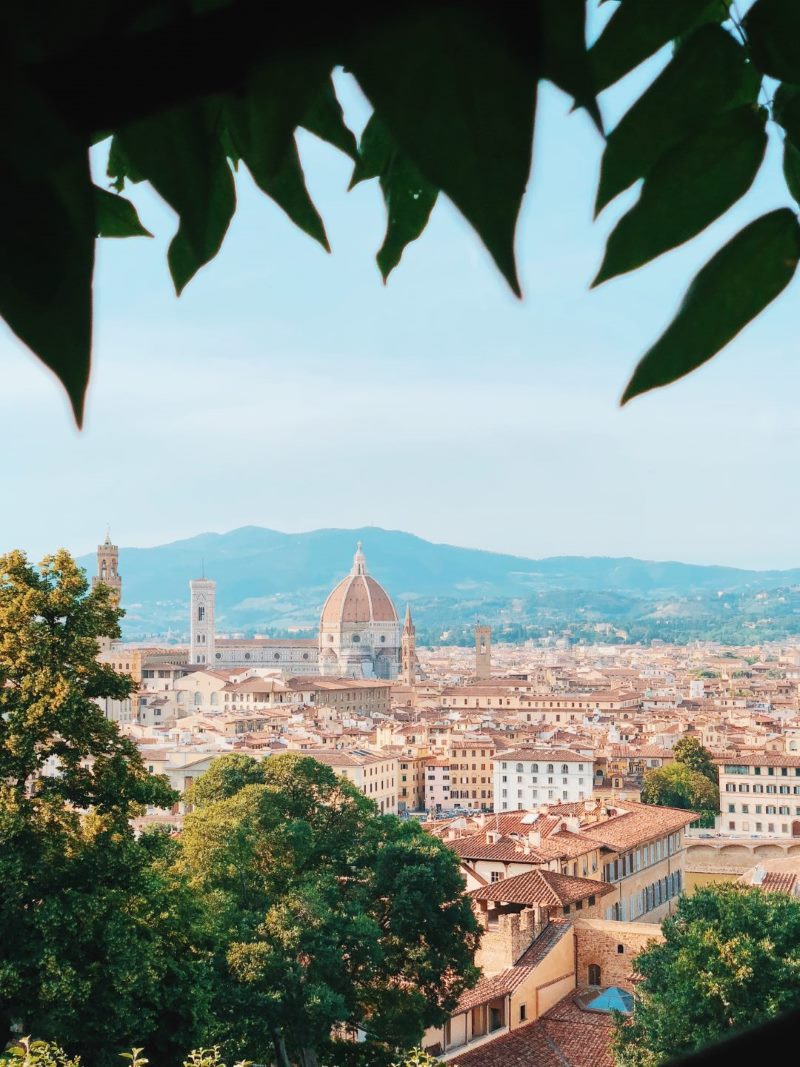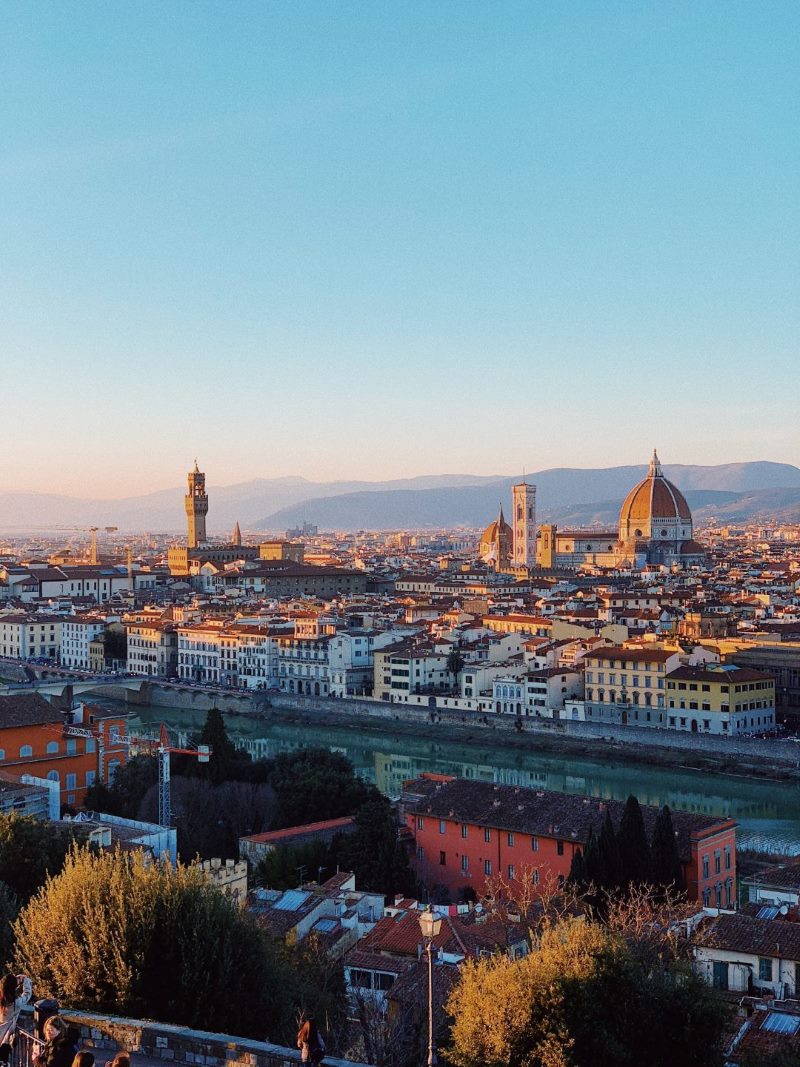Florence Street Food Tour: A Guide to Trying Traditional Tuscan Foods
Are you looking to immerse yourself in the flavors of Florence and try traditional Tuscan food? Join the Florence Street Food Tour to enjoy a small group tour with a local guide who will take you on a walking tour of the city’s historic center.What to Expect
On this food tour, you’ll have the chance to try some of Florence’s famous local specialties, including schiacciata with balsamic vinegar, cantuccini, fresh homemade pasta, and traditional pappa al pomodoro. Your local guide will give you a personalized experience and share interesting details about Florence history and food culture.The Experience
The Florence Street Food Tour is a great way to experience the flavors of Florence in a unique way. The tour allows you to explore the small streets of Florence’s historic center while trying traditional Tuscan food.Highlights
- Try traditional Tuscan food
- Enjoy a small group tour with a local guide
- Experience the flavors of Florence
The Itinerary
The tour starts at Piazza della Repubblica, where you’ll meet your guide and the rest of your small group. From there, your guide will take you on a leisurely walk through the historic city center. You’ll stop at a local market, and your guide will give you a tour and explain the different types of ingredients used in traditional Tuscan cooking. Next, you’ll visit different food stalls to try some of Florence’s most popular dishes. The tour includes a variety of food stops, which will satisfy even the hungriest of foodies. You’ll taste Florence’s famous schiacciata with balsamic vinegar, a savory flatbread that’s the perfect snack to share with friends. You’ll also get to try cantuccini, a type of almond biscuit that’s traditionally served with dessert wine. These biscuits are crunchy and sweet, and you’ll find that they make the perfect pick-me-up during the tour. Another highlight of the tour is the chance to try traditional homemade pasta. You’ll see how the dough is made and you’ll have the opportunity to taste the pasta with a simple yet delicious tomato sauce. The tour ends by visiting a popular food stand selling traditional pappa al pomodoro, a hearty tomato and bread soup that’s a staple of Tuscan cuisine. It’s the perfect way to end your food journey through Florence.What’s Included
The tour includes food tasting, a local guide, drinks, and tips.Booking Information
Ready to book your Florence Street Food Tour? It’s easy! Simply follow this link to book the tour here. Once you’ve selected your desired tour date and time, you’ll receive a confirmation email with all the necessary details regarding the meeting point and other important information.Final Thoughts
The Florence Street Food Tour is a fun and delicious way to experience Florence’s food culture. With a knowledgeable local guide leading the way, you’ll taste some of the city’s most iconic dishes and learn about the history behind them. Don’t miss out on this opportunity to sample Florence’s best street food!
Frequently Asked Questions about Florence, Italy
Florence is a bustling city in the heart of Tuscany, famous for its magnificent architecture, rich culture, and exquisite art. An important Renaissance center, it is home to a variety of monuments, galleries, and museums that offer an unparalleled insight into Italian history and art. If you’re planning to visit Florence anytime soon, this FAQ guide provides you with all the essential information you need to make your trip memorable.1. Where is Florence located?
Florence is located in Tuscany, a region in Italy’s central-western part. It is situated along the banks of the Arno River, and is surrounded by gentle hills that provide a picturesque setting for this beautiful Renaissance city.2. What is the best time to visit Florence?
The best time to visit Florence is in the months of May, June, and September when the weather is mild, and there are fewer crowds. The peak tourist season is in the months of July and August, and during this time, the city can be crowded and hot. Winter also offers a good time to visit Florence as the city remains relatively mild compared to other parts of Europe.3. How do I get to Florence?
Florence has its own airport, the Florence Airport (FLR), which is connected to other major Italian cities like Rome and Milan. Other options to get to Florence include taking the train, bus, or rental car.4. What are the must-see attractions in Florence?
Florence is home to some of the most iconic and beautiful monuments and art collections in Italy. Some of the must-see attractions in Florence include:i. The Duomo
The Duomo is the main cathedral of Florence and boasts a magnificent Renaissance-era dome designed by Filippo Brunelleschi.ii. Uffizi Gallery
The Uffizi Gallery is one of the oldest and most famous art museums in the world, boasting a collection of priceless artworks from the Renaissance era.iii. Ponte Vecchio
Ponte Vecchio is one of the most iconic bridges in Florence, with shops and vendors selling jewelry, art, and other trinkets that dot the landscape.iv. Palazzo Pitti
Palazzo Pitti is a grand palace that was once the residence of the grand dukes of Tuscany. It is now home to several museums, galleries, and gardens.v. Boboli Gardens
The Boboli Gardens is a grandiose parkland located behind the Palazzo Pitti that provides visitors with a stunning view of Florence’s skyline.5. What is the currency used in Florence?
The currency used in Florence and Italy is the Euro. It is recommended that visitors exchange their currency for euros before traveling to Florence.6. Do I need a visa to visit Florence?
Whether you need a visa or not depends on your country of origin. Citizens of many countries are entitled to visit Italy without a visa for up to 90 days. Visitors should check with their country’s embassy or consulate beforehand to determine visa requirements.7. What are some other major cities near Florence?
Some other major cities near Florence include: – Pisa (87 km away) – Bologna (100 km away) – Siena (75 km away) – Rome (280 km away)8. What is the food like in Florence?
Florentine cuisine is an essential part of Italian culture, and visitors can enjoy a wide variety of dishes ranging from classic pizza and pasta to famous Tuscan bread and crostini. Florence is also famous for its artisanal gelato, which can be found on almost every corner.9. What are some traditional festivals in Florence?
Florence is famous for its many cultural and religious festivals, including: – Easter Sunday: Celebration of the Resurrection of Christ – Calcio Storico: A traditional football game that is played in June – Festa di San Giovanni: Celebration of the patron saint of Florence, held on the 24th of June – Festa della Rificolona: Held on September 7th, it celebrates the eve of the Nativity of the Virgin.10. What are some tips for visiting Florence?
Here are some tips for visiting Florence: – Book your tickets to famous attractions in advance to avoid long lines. – Wear comfortable shoes and clothes as there is a lot of walking involved. – Try to learn a few basic Italian phrases to make communication easier. – Be wary of pickpockets when walking through crowded tourist areas. – Enjoy the food and wine, and make the most of the vibrant local culture.Book Your Tour Now
Florence is a city that is steeped in history, culture, and art. With its magnificent architecture, rich history, and vibrant local culture, it has something to offer for everyone. Whether you’re visiting Florence for the first time or the tenth time, this FAQ guide will ensure that you make the most of your trip.
How to Spend Your Time as a Tourist in Florence
Florence, the capital city of Tuscany, is one of the most popular tourist destinations in Italy, and for good reason. The birthplace of the Renaissance, Florence is a city filled with art, culture, history, and architecture. It can be overwhelming for first-time visitors to know where to start and what to prioritize. In this guide, we will go into detail about how to spend your time as a tourist in Florence.Getting There
Florence is accessible by train, bus, or car. If you are coming from another part of Italy, the train is the most convenient way to reach Florence. If you are arriving from abroad, there are flights into Florence’s airport, but many visitors find flights into Pisa or Rome and taking the train to Florence to be more practical. Florence also has an extensive public transportation system, including buses, trams, and taxis.Where to Stay
There are many options for accommodation in Florence, from luxury hotels to budget hostels. The best areas to stay in Florence are the historic center or the Oltrarno neighborhood, which is across the river Arno. The historic center is where most of the famous attractions are located and also has the advantage of being easily walkable. Oltrarno is a bit more relaxed and has a more local vibe, with many artisan shops, cafes, and restaurants.What to Do
There are plenty of things to do in Florence, but here are some must-see attractions:1. The Duomo
The Duomo is the most recognizable landmark in Florence and is a must-see for any first-time visitor. The Cathedral of Santa Maria del Fiore, as it’s officially known, was completed in the 15th century and is one of the largest churches in Italy. The structure is topped with an enormous dome designed by Renaissance master Brunelleschi. Climb to the top of the dome for breathtaking views of the city.2. Uffizi Gallery
The Uffizi Gallery houses one of the world’s greatest collections of Renaissance art. Visitors can view works by famous artists such as Botticelli, Michelangelo, and Leonardo da Vinci. The museum can get quite busy, so it’s best to book tickets in advance or visit early in the day.3. Accademia Gallery
The Accademia Gallery is home to Michelangelo’s David, one of the most famous sculptures in the world. Visitors can also see other works by Michelangelo and other notable Renaissance artists. Again, it can get crowded, so booking in advance is recommended.4. Ponte Vecchio
The Ponte Vecchio is one of the oldest and most famous bridges in Florence. It spans the Arno River and is lined with shops selling jewelry, art, and souvenirs.5. Boboli Gardens
The Boboli Gardens are a stunning example of Italian Renaissance garden design. Located behind the Pitti Palace, the gardens are spread over several acres and offer panoramic views of Florence.6. Basilica di Santa Croce
The Basilica di Santa Croce is the largest Franciscan church in the world and the final resting place of many notable Florentines, including Michelangelo, Galileo, and Machiavelli.Where to Eat
Florence has some of the best food and wine in Italy. Here are some local dishes to try:1. Fiorentina Steak
A large T-bone steak grilled over charcoal and seasoned only with salt and pepper, Fiorentina steak is a Florentine specialty. It’s usually meant to be shared between two or more people.2. Ribollita
Ribollita is a hearty Tuscan soup made with beans, bread, and vegetables. It’s typically served with a drizzle of olive oil and grated Parmigiano-Reggiano.3. Lampredotto
Lampredotto is a Florentine street food, made from the fourth stomach of a cow, boiled and served with a tangy green sauce or spicy red sauce.4. Chianti Wine
Chianti wine is produced in the Chianti region of Tuscany and is one of Italy’s most famous wines. It’s made from Sangiovese grapes and pairs well with many typical Tuscan dishes.Book Your Tour Now
Florence is an incredible city full of history, culture, and art. With this guide, you should have a good understanding of what to prioritize during your visit. No matter what you choose to do or see, you’re sure to fall in love with this charming Italian city.Table of Contents

